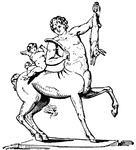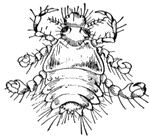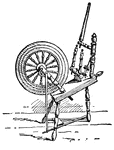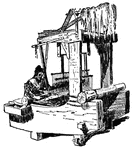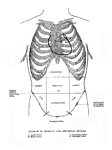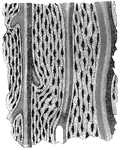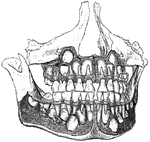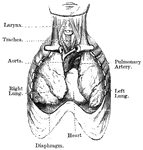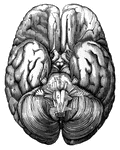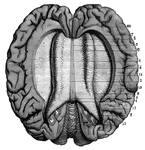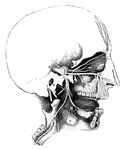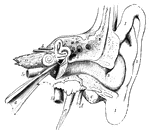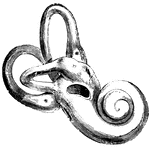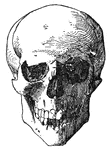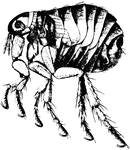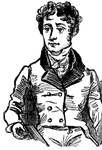
Thomas Campbell
Thomas Campbell (27 July 1777 — 15 June 1844) was a Scottish poet chiefly remembered for his sentimental…

Women's Suffrage Cartoon - The Attraction
"The attraction. Meeting will be addressed by a good looking suffragette by order of committee. Busy…

Trichina
The most dangerous of the parasitic round-worms is Trichina. This is trichina encysted in human muscle.

Arm Muscle
A,b,c, deltoid muscle; d, coracobrachialis muscle; r,r, triceps;e,i, extensors of the hand; km, flexor…
Bones of Arm
Arm of humans; h Humerus or bone of upper arm; r and u Radius and Ulna, or bones of the forearm; c Carpus,…

Facial Angles
The facial angle is an angle formed by two imaginary lines; one drawn fom the most prominent part of…
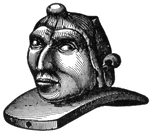
Indian Pipe Shaped as Human Head
Indian pipe in the shape of a human head, used for smoking tobacco.
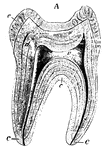
Human Tooth
A tooth is generally described as possessing a crown, neck, and root. Side view of a tooth.
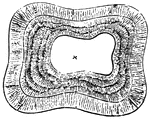
Human Tooth
A tooth is generally described as possessing a crown, neck, and root. Top view of a tooth.; 1. Central…
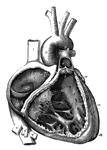
Human Heart
The interior of the heart is divided longitudinal into the right and left sections. Each right and left…

Human Heart
1 Right pulmonary veins; 1' Cavity of the auricle; 2 Wall of the auricle; 3,3' Walls of the ventricle;…
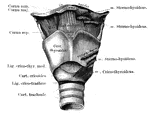
Human Larynx
The part of the respiratory tract between the pharyna and the trachea. Responsible for speech.
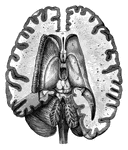
Human Brain
A top view of a dissection of the human brain showing the lateral fourth and fifth ventricles.
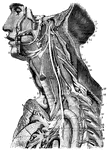
Human Nerve System
Diagram of the upper half of a male human showing the routes of the nervous system.

Human Brain
Side diagram of the human brain showing which parts of the brain control hearing, speech, vision, legs,…

Human Brain
Side diagram of the human brain showing which areas perform the sense of taste, smell, and vision.
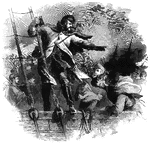
Burnside Expedition
"Burnside Expedition- the fleet and transports off Hatteras during the storm- the general giving orders.…
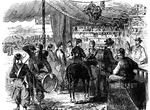
Sutler's Store
"A sutler's store, Harper's Ferry, Va. The sutler's store at Harper's Ferry represents one of those…

Camp Zagonyi
"Camp Zagonyi, encampment of Fremont's army on the prairie, near Wheatland, Mo., October 14th, 1861.…
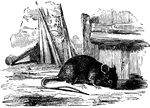
Brown Rat
A common brown rat. Lives in houses of thier own construction. Lives in everything from meadows to human…

Common Sparrow of Europe
Often found among human settlement, the common sparrow of Europe's diet consists of seeds, insects,…
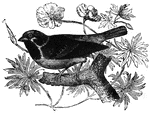
Wood Sparrow
Somewhat aloof from human habitiation, the wood-sparrow can often be seen mingline with other sparrow…
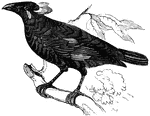
Mino
Found in Java and Sumatra, the mino-bird posses a remarkable ability to replicate human speech.

Roger's Rock
Roger's Rock. This sketch is from the lake, a little south of Cook's Point, seen just over the boat…
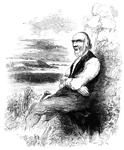
Isaac Rice
Isaac Rice was the name of our octegenarian guide. Like scores of those who fought our battles for freedom,…

Parakeet Macaw
Native to South America, the parakeet macaw is renowned for its powers to imitate human speech.
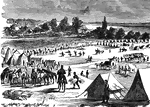
Camp Zagonyi
"Camp Zagonyi, encampment of Fremont's army on the prairie, near Wheatland, Mo., October 14th, 1861.…
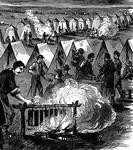
Camp Zagonyi
"Camp Zagonyi, encampment of Fremont's army on the prairie, near Wheatland, Mo., October 14th, 1861.…
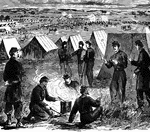
Camp Zagonyi
"Camp Zagonyi, encampment of Fremont's army on the prairie, near Wheatland, Mo., October 14th, 1861.…

Abdominal
"In human anatomy, certain regions into which the abdomen is arbitrarily divided for the purpose of…

Martin Luther
"Martin Luther was born at Eisleben in 1483. He was the son of a poor miner, had entered the Augustinian…
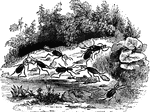
Bombadier Beetle
"The bombadier beetle has a large oval abdomen, which secretes a caustic fluid. They live in societies,…

Death's Head Moth
"The most remarkable species is the Death's Head Moth, Acherontia Atropos, a large kind,…
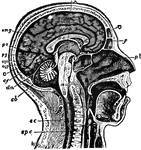
Human Brain
"The Brain is the encephalon, or center of the nervous system and the seat of consciousness and volition…
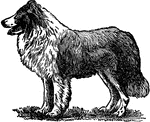
Collie
"Collie is a breed of the dog of obscure origin, which is highly valued. Many anecdotes are told of…
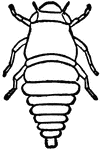
Larval Frog Hopper
"Frog Hoppers are ranked under the homopterous sub-order of insects. The name of frog hopper refers…
Frog Hopper on Leaf
"Frog Hoppers are ranked under the homopterous sub-order of insects. The name of frog hopper refers…

Adult Frog Hopper
"Frog Hoppers are ranked under the homopterous sub-order of insects. The name of frog hopper refers…
